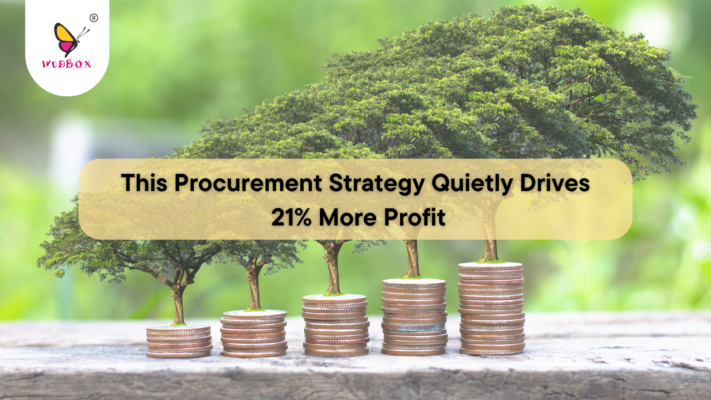Scope 3 emissions, often the largest yet most elusive component of a company’s carbon footprint, pose a unique challenge for business leaders. These emissions extend beyond direct operations, originating across the value chain within supplier networks, product lifecycles, transportation, and even waste. For CEOs, tackling Scope 3 emissions is no longer a peripheral concern; it is central to achieving meaningful climate goals and securing long-term business viability.
In this blog, we will shed light on effective green procurement strategies to tackle Scope 3 emissions, offering insights into actionable approaches and real-world examples from companies that have successfully optimized their supply chains to reduce their carbon footprint. Let’s move ahead and explore this in depth.

What Are the Key Green Procurement Strategies That You Can Adopt for Reducing Scope 3 Emissions?
Below are ten key strategies to manage Scope 3 emissions effectively:
1. Engage and Collaborate with Suppliers
Since a large portion of Scope 3 emissions comes from suppliers, collaborating with them is essential. Engaging suppliers helps share sustainability goals, track emissions data, and develop reduction strategies. By creating a transparent and accountable partnership, both parties can address emissions more effectively.
Unilever’s supplier engagement program encourages its suppliers to reduce emissions with initiatives like sustainable sourcing and waste reduction. This collaboration has led to measurable reductions in carbon emissions across their supply chain.
2. Adopt Sustainable Alternatives to Conventional Materials
Switching to sustainable products with a lower carbon footprint can drastically reduce Scope 3 emissions. Alternatives include recycled materials, biodegradable products, and plant-based or bio-based materials, all of which contribute to lowering emissions associated with production and disposal.
IKEA sources 100% of its wood, paper, and cardboard from sustainable sources and incorporates recycled materials in its product lines. This shift reduces emissions not only from production but also from the raw material extraction process.
3. Leverage Data Management Systems for Emissions Tracking
Tracking emissions across a complex supply chain is a daunting task. Using emissions tracking software helps businesses monitor and report Scope 3 emissions accurately. These systems can collect emissions data from suppliers, enabling companies to make data-driven decisions.
Walmart uses platforms like Ecochain to track emissions from its global supply chain. This technology enables the company to gather accurate emissions data, set reduction targets, and collaborate with suppliers to reduce Scope 3 emissions.
4. Harness Technology to Track and Reduce Emissions
Technology plays a central role in reducing Scope 3 emissions. From using AI to optimize logistics and production schedules to employing blockchain for supply chain transparency, the right technological solutions can significantly reduce emissions.
Maersk uses AI to optimize shipping routes, reducing fuel consumption and emissions. The company also uses blockchain to track the sustainability of materials, ensuring emissions are managed throughout its supply chain.
5. Implement Carbon Offset Programs
For emissions that cannot be directly reduced, carbon offset programs can help. By investing in renewable energy projects, reforestation, or other carbon reduction initiatives, companies can offset their Scope 3 emissions.
Microsoft has been carbon-neutral since 2012 by investing in projects like renewable energy and forest conservation. This approach allows the company to offset emissions it cannot eliminate directly.
6. Support Suppliers in Adopting Renewable Energy
Helping suppliers transition to renewable energy is an impactful way to reduce Scope 3 emissions. Companies can offer incentives, technical support, or access to renewable energy programs, enabling suppliers to make the switch to cleaner energy sources.
Google encourages its suppliers to adopt renewable energy by offering financial incentives and leveraging its buying power to facilitate access to clean energy. This approach has significantly reduced emissions within its supply chain.
7. Optimize Logistics and Transportation
Transportation is a significant contributor to Scope 3 emissions. By collaborating with logistics partners to optimize routes, reduce fuel consumption, and shift to low-emission vehicles, companies can make substantial emissions reductions.
Tesla uses electric vehicles for its own transportation needs and collaborates with logistics providers to reduce emissions across its supply chain. This commitment to clean transportation helps lower emissions from shipping and delivery.
8. Shift to a Circular Economy
A circular economy focuses on reducing waste and reusing materials, leading to significant reductions in Scope 3 emissions. This approach not only cuts emissions but also helps conserve resources and reduce costs.
Patagonia promotes a circular economy by offering product repairs and encouraging customers to buy used items. This reduces demand for new materials, lowering emissions from production and waste disposal.
9. Set Clear Sustainability Targets for Suppliers
Establishing clear, measurable sustainability targets for suppliers helps align their operations with your company’s sustainability goals. These targets should be tracked and adjusted regularly to ensure progress is being made toward reducing emissions.
Apple has set ambitious sustainability goals for its suppliers, including carbon neutrality by 2030. By holding suppliers accountable, Apple ensures that its entire supply chain works toward reducing Scope 3 emissions.
10. Provide Incentives for Suppliers to Reduce Emissions
Providing incentives for suppliers to reduce emissions can be a powerful motivator. Offering rewards, such as long-term contracts, preferential treatment, or financial incentives, can drive suppliers to prioritize sustainability and adopt emissions-reducing measures.
Walmart’s Project Gigaton aims to reduce one billion metric tons of greenhouse gases from its supply chain by 2030. Suppliers who meet specific emissions reduction goals are rewarded with funding and support, encouraging continued action toward sustainability.
As we face the pressing challenge of climate change, reducing Scope 3 emissions is no longer a choice; it’s a necessity for businesses aiming to thrive in a sustainable future. Adopting green procurement strategies not only reduces carbon footprints but also enhances brand value, strengthens supplier relationships, and positions your company as a leader in sustainability. By adopting green procurement strategies, you can take meaningful steps toward lowering your carbon emissions and contributing to a greener planet.
At Wudbox, we understand the importance of sustainable practices and are committed to helping businesses like yours make a positive impact. Our range of eco-friendly products offers you the tools to take action and drive change within your organization. Whether you’re just beginning your green procurement journey or looking to expand your efforts, Wudbox is here to support you every step of the way.
Get in touch with us today to explore how we can help you reduce Scope 3 emissions, source sustainable products, and build a more resilient and sustainable supply chain. Reach out to us at 9978626365 or visit our website to learn more.
Switch to Bamboo Products: A Sustainable Alternative to Plastic
Sustainability and climate action have become the norm for both individual consumers and institutional consumers. [...]
Feb









